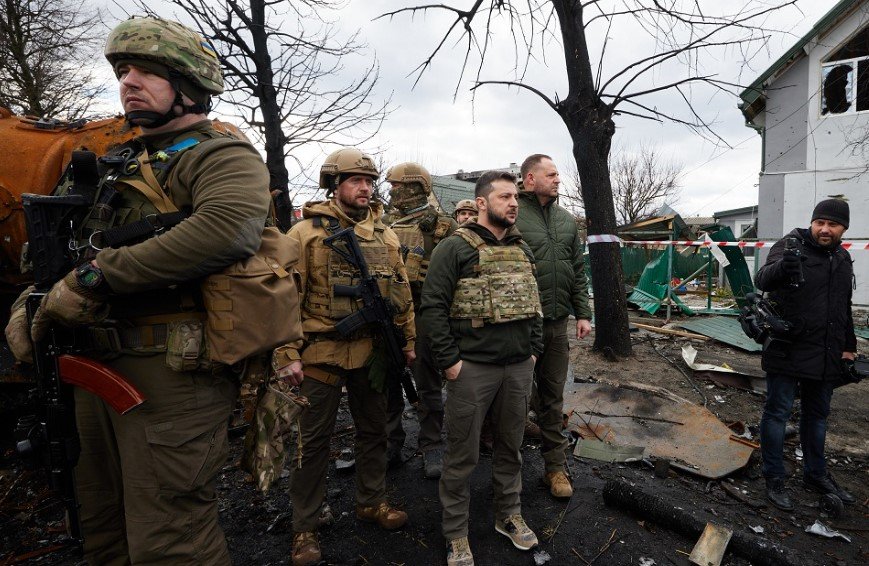Ukraine’s recent drone strikes, called Operation Spider Web, have sent shockwaves through Moscow’s military plans. Even if Ukraine’s claim of destroying 41 Russian aircraft is up for debate, the psychological punch of hitting deep inside Russian territory is undeniable. This bold move shows Kyiv’s ability to reach targets far beyond the frontline, rattling the Kremlin and shifting the conflict’s tone.
Operation Spider Web wasn’t a spur-of-the-moment thing. It took over a year and a half of planning, intelligence gathering, and coordination. The strikes targeted Russian airbases scattered from the icy reaches of eastern Siberia all the way to Russia’s western borders, making it clear: Ukraine can strike where it hurts most.
The Kremlin’s response was swift but defensive, emphasizing that the damage was limited and blaming Western support for prolonging the war. But for Ukraine, this wasn’t just about hardware—it was about morale and sending a message. The audacity of hitting critical military infrastructure so far inside Russia forces Putin to reconsider his strategy and redeploy resources to defend the homeland instead of pressing forward in Ukraine.
How Ukraine Pulled Off Operation Spider Web
This was no small feat. Ukraine’s military intelligence, combined with Western technology, created a drone network capable of long-range, coordinated strikes. These aren’t your typical hobbyist drones; they’re sophisticated, weaponized machines that can avoid radar and hit precise targets.
The operation involved multiple drone types, some designed for surveillance, others for attack. Launched from covert locations, including mobile units disguised as civilian vehicles, these drones flew hundreds of miles, infiltrating airbases and damaging aircraft on the ground.

What’s fascinating is how this reflects a broader shift in warfare—where relatively inexpensive drones can punch above their weight, disrupting larger, more traditional military forces. The attack shook Russian command and control, forcing Moscow to divert funds and attention to homeland air defenses and drone countermeasures.
The Psychological Blow to Moscow
Even if the physical damage isn’t as catastrophic as Ukraine claims, the psychological toll on Russian forces is massive. Imagine being a pilot or crew member stationed in what you thought was a secure base, suddenly finding it vulnerable to attack from unseen drones.
This kind of warfare introduces uncertainty and fear—soldiers must now factor in the possibility that anywhere, even deep behind friendly lines, is within enemy reach. That’s a huge shift in morale and strategy.
Western analysts say these strikes chip away at the Kremlin’s aura of invincibility. It undermines confidence in Putin’s ability to protect Russian soil, which could ripple through military ranks and civilian support alike.
The Bigger Picture: What It Means for the War
This is a stark reminder that the conflict is evolving. Russia can no longer assume its interior regions are safe from attack. It complicates Putin’s calculus, forcing him to juggle offensive operations in Ukraine with homeland security concerns.
Some experts predict Moscow will increase its investment in anti-drone technologies, electronic warfare, and stricter air defense protocols. But these measures come at a cost, stretching already strained resources and potentially slowing offensive momentum.
Ukraine’s success also boosts Zelenskyy’s position internationally. Demonstrating the ability to strike deep into Russia garners diplomatic leverage, showing allies that Ukraine can keep the pressure on, justifying continued support.
Here’s a quick look at the operation’s impact in numbers:
| Metric | Details |
|---|---|
| Aircraft damaged/destroyed | 41 (Ukraine’s claim) |
| Estimated damage cost | $7 billion |
| Distance of strikes | From eastern Siberia to Western Russia |
| Duration of planning | 18 months |
The Road Ahead
Ukraine’s drone strikes are a clear message: they’re not just defending territory; they’re taking the fight to the heart of Russia. It’s a bold statement that changes the stakes of this long, brutal conflict.
But what will Putin do now? Will he ramp up defense and try to neutralize Ukraine’s drone capabilities? Or will he respond with heavier strikes inside Ukraine, risking escalation? The coming months will be crucial.
One thing’s certain: the war is far from over, and the days of safe rear bases are gone for Russia. Ukraine has rewritten the rulebook, and Moscow must adapt—fast.
